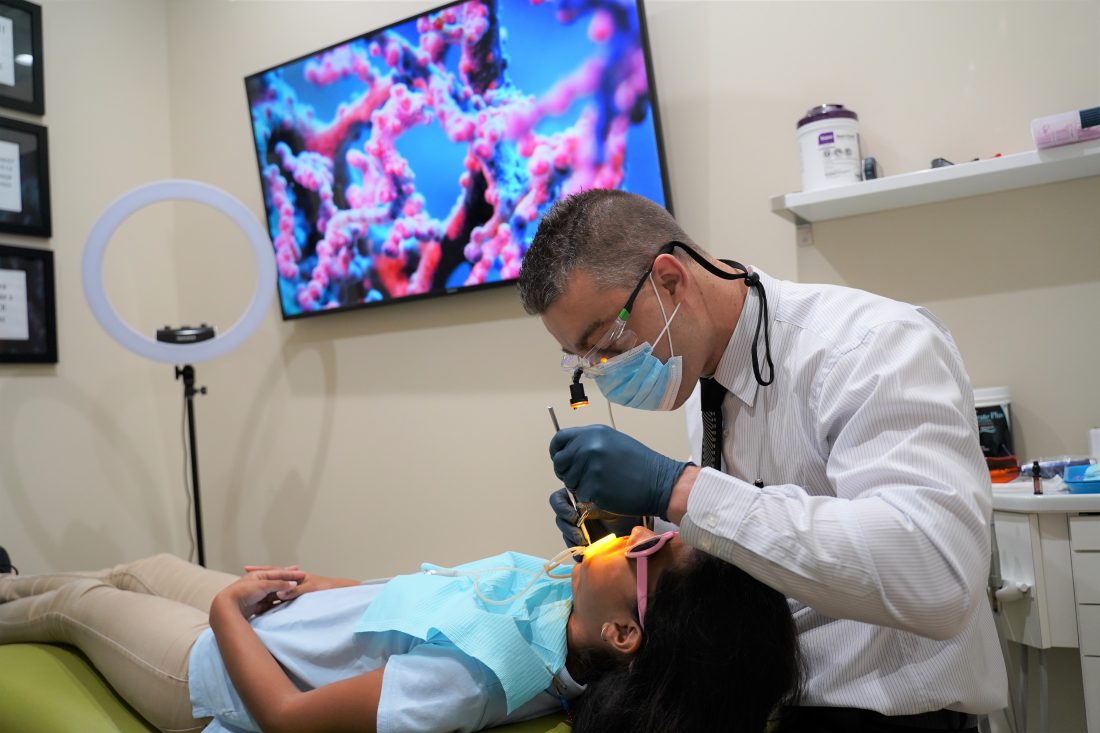Lingual braces offer moderate to severe misalignment and bite issues. This is a highly aesthetic option to straighten your teeth.

A lower lingual holding arch is an appliance that holds the space in the lower dental arch and acts as a "space maintainer,"
Lingual braces are identical to traditional braces, but they are entirely invisible. They are popular because children and adults prefer wearing them instead of traditional braces for a long time.
Things you should know about lingual braces are:
1. Placement
These braces are placed at the back of the teeth, making them visible. Their working procedure is the same as the traditional braces.
Some people dont like showing their braces, so it is a perfect choice.
2. Comparison To Other Methods
These braces are invisible. Lingual braces are permanently placed in your teeth for straightening, and you need not remember them to wear.
However, compare it to other braces, such as Invisalign, which offer a similar type of treatment. Invisalign provides a tray-style straightening method, which indicates that they are not permanent and have to wear it for a certain period to be effective.
Invisalign is made of plastic and sometimes cannot correct painful dental issues.
Also, you may have to see your orthodontist more often for checkups, while lingual braces Miami require adjustment and tightening every six to eight weeks.
3. Food Limitations and Hygiene Essentials
Maybe wondering what to eat with lingual braces. You must avoid hard and sticky food that can stick to the back of the braces and will become hard to remove through a brush.
Foods such as corn and apples can break the braces, and sticky food like candies and caramel can stick to the braces making them hard to take off.
Then what can you eat with lingual braces?
You can eat food that is soft and easy to chew, like dairy products such as cheese, yogurt, or any milk-based products.
You can eat bread, softer fruits and grains that are easy to swallow, and seafood and vegetables with lingual braces.
Cleaning your lingual braces is a little hard to perform as it is placed at the back of the teeth; cleaning them becomes challenging. You can buy a small dentist's mirror to clean them.

4. Other Difficulties with lingual braces
You may find some difficulties while speaking until you get used to them properly and your teeth adjust. Running the tongue again and again on the brackets can irritate the tongue.
You may feel discomfort for a few days, but it will fade away quickly. It is unusual to have brackets, so it is obvious to feel irritated. The benefits of braces are your gums and cheeks will not be in touch with the brackets and will be free of any irritation.
5. More Flexibility
They provide more flexibility because the dentist does not place it on all teeth. If you have an alignment issue with only one tooth, the dentist will place the braces only on that particular tooth. This gives flexibility in cost and is affordable braces Miami as it will be installed only on the teeth which need straightening. The treatment plan depends on the dental issue you are having.
Conclusion:
Confirm orthodontics specialists of Florida about lingual braces before placing them. Confirm whether or not it is a good option for you. In many cases, conventional braces or Invisalign are the better choices.
Article Source : https://www.articleaffiliate.com/things-you-should-know-about-lingual-braces/
Comments